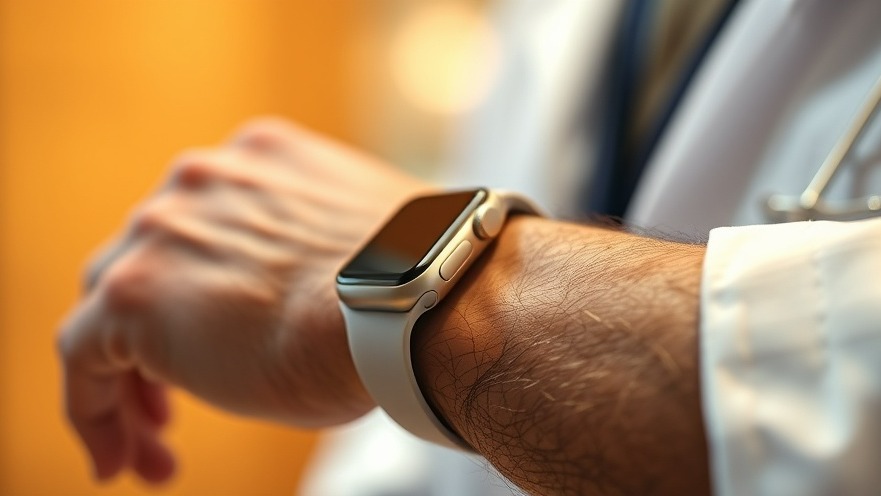
Understanding the Digital Landscape of Smartwatches
In recent years, smartwatches have rapidly transformed from luxury gadgets into essential tools for health monitoring and personal wellness. Offering features like heart rate monitoring, step counting, and more, these devices can feel almost magical. Users strap on their smartwatches, and instantly, a stream of data about their body becomes accessible: from step counts to calories burned. Yet, beneath the alluring exterior lies a complex interplay of technology and data generation that can significantly impact not just individual health, but also patient care within the healthcare ecosystem.
Unpacking the Promise of Wearable Technology
As Apple CEO Tim Cook emphasizes, the ambition behind wearable technology is profound. While Cook heralds a future where technology can save lives, it’s crucial to understand how these devices function beyond their impressive marketing. For health practitioners, smartwatches represent both an opportunity and a challenge. With a decade of firsthand experience in researching wearables, I have often considered the gap between the promises of these tools and their practical implications.
Five Essential Insights for Smartwatch Users
To maximize the utility of wearable technologies, users and health practitioners alike must reflect on the functionality and limitations that these devices harbor:
1. Understanding Step Counts
Contrary to common belief, the step count recorded by these devices isn't a straightforward reflection of physical movement. Rather, it hinges on sophisticated algorithms and sensors that assess motion. For instance, an accelerometer senses the velocity at which the device is moved, ultimately deciding whether that movement qualifies as a step. This raises a significant question for health insights: could misinterpreted data lead to misguided health decisions?
2. Skin Tone Sensitivity
Another critical concern is the accuracy of biological details these wearables gather. Notably, blood oxygen sensors—which have become commonplace—tend to perform less effectively on darker skin tones. This limitation highlights an important area for medical practitioners to consider; the data may reflect systemic biases in technology that can affect treatment outcomes.
3. The Learning Curve of Features
The wide range of metrics tracked can be overwhelming, especially for those unversed in technology. Beyond step counts and heart rates, features like sleep monitoring and stress assessment can play pivotal roles in tracking overall wellness. However, understanding what these metrics signify and the best practices for using them is essential for both caregivers and patients. This knowledge assists in informed discussions during consultations.
4. The Need for Critical Evaluation
Smartwatch users may feel empowered by the immediacy of health data, yet there's a pressing need to evaluate this information critically. How is data generated? Just as a doctor's appointment involves diagnostics and discussions, interpreting wearable data needs a similar depth of understanding. Health practitioners can guide patients in this area, creating a dialogue about accuracy and implications.
5. The Future of Health Monitoring
Wearable technology holds significant potential for broader health trends. As developers incorporate advanced features such as ECG readings and glucose monitoring, the question remains: How ready are practitioners to utilize these new data types for personalized care? The future of healthcare could increasingly lie in the integration of these devices into routine practices, requiring ongoing education for both medical professionals and patients.
Concluding Thoughts: Embracing the Change
The evolution of smartwatches and wearables is more than just a technological advancement; it unveils a shift in how we perceive and monitor health. For concierge health practitioners who strive to provide cutting-edge care, staying informed about the nuances of these devices will ensure that they can offer well-rounded insights to their patients. Engaging in ongoing education about these technologies will not only empower caregivers but also help patients navigate their health journeys effectively.
In light of these insights, I encourage health practitioners to familiarize themselves with the latest wearable technologies. By doing so, you can enhance patient care through informed recommendations and conversations. The integration of smartwatches into medical practice is not merely a trend—it’s the future of proactive healthcare.
 Add Row
Add Row  Add
Add 




Write A Comment